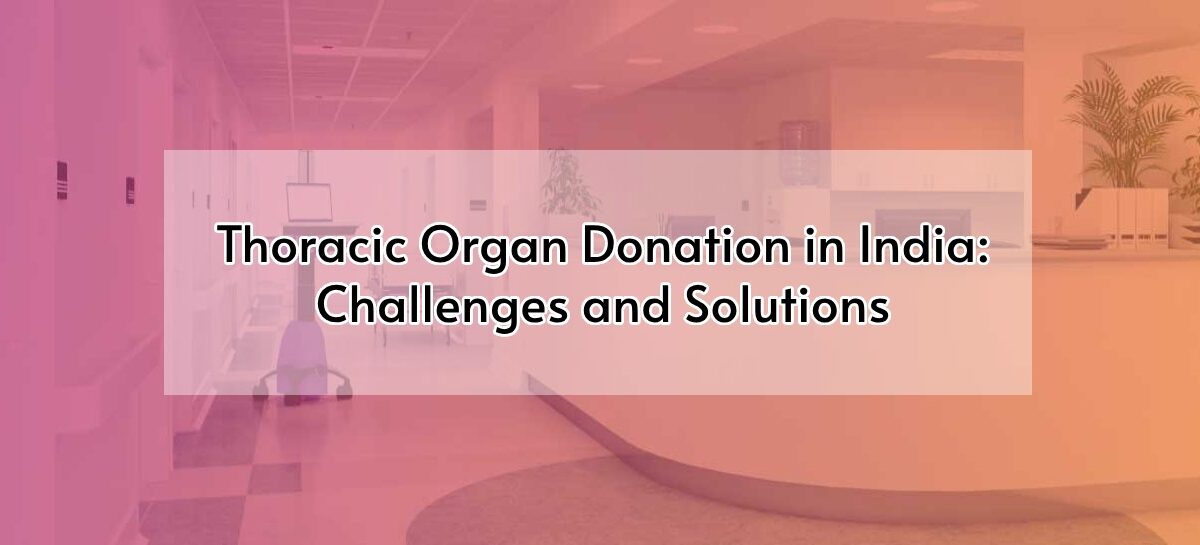Legal basis of Deceased Organ donation in India
Organ donation in India is regulated by the Transplantation of Human Organs and Tissues Act (THOA), 1994. To prevent irregularities in organ donation, revisions to THOA were made by Government of India in 2011 and the revised THOA rules were notified in 2014. This law allows both living and deceased donor transplantation from brain-dead donors in India. The first heart transplant followed almost immediately after the law was enacted in 1995 at AIIMS, New Delhi. The first Heart-Lung transplantation (HLTx) was performed in Chennai by Dr K.M. Cherian on May 3, 1999 utilizing cadaveric donations coordinated by MOHAN foundation across six hospitals in Chennai. The first successful isolated lung transplant (single) in India was only accomplished in 2011 and the first bilateral lung transplantation was performed in 2013 in Chennai, more than 42 years after the first renal transplant in India on February 2, 1971 at CMC Vellore. After a slow start to thoracic transplants in Tamilnadu, there was a marked increase after 2008; this was related to sustained campaigns by NGOs, public awareness by a sentinel donation (“the Hithendran effect”) and governmental legislation and championship. Tamilnadu state was the first to start a cadaver transplant program (CTP) in India by 2008; In 2014, CTP was named a government society, the “Transplant Authority of Tamil Nadu (TRANSTAN)”. Other states followed, with several Southern and Western states now having active State organ transplant organisations (SOTTOs). The National Organ and Tissue Transplant Organization (NOTTO) is the apex National-level organization under the Directorate General of Health Services, Ministry of Health and Family Welfare, Government of India established in 2014 to coordinate transplants in Delhi and has been actively coordinating transplant donations between SOTTOs since 2019.
Structure of the Deceased donor donation program in India
Health is a “concurrent” subject in India and states have the major role in delivery of health care services, including organ donation and transplantation. At the state level, each state (except the Government of Andhra Pradesh which has its own law, The Andhra Pradesh Transplantation of Human Organs Act-1995, to regulate organ donation in the state) participates using THOA 1994 and notifies a state-level organisation that coordinates both deceased and living-related donation. Living donors must be over 18 years of age and are limited to immediate blood relatives or, in some special cases, out of affection and attachment towards the recipient. Deceased donors may donate six life-saving organs: kidneys, liver, heart, lungs, pancreas, and intestine. Uterus, skin, bone and valves are also donated but are not considered live-saving. Deceased donor organ donation is only legally permissible if the donor hospital is registered with this state-level organisation. However not all states have notified a state level organisation; only 13 out of the 28 states and 8 union Territories have a SOTTO. This imbalance is more in the North, with all the Southern states having an active SOTTO. There are five regional organ transplant organisation (ROTTO) that coordinate with SOTTOs in their zones and in-turn coordinate with NOTTO for organ sharing across the country. The ROTTOs include TRANSTAN (for the five southern states), Zonal coordination centre, Mumbai (for Western states) IPGIMER, Kolkata (Eastern states), PGIMER Chandigarh (for North) and Gauhati Medical College (For North-East).
Current status of Thoracic organ donation in India
India lags significantly in organ donation at 0.30 ppm (donations in people per million) in 2019; less than 0.01% of the population donate. This should be compared with Spain (49.61 ppm), U.S (36.88 ppm) and U.K (24.88 ppm) to understand the extreme low rate in donations. Also, there is significant heterogeneity in organ donation rates with South-Western India having higher than average donations; this includes Tamilnadu (1.8 pmp) and Chennai city (14 pmp). There has been a shift with a trend in higher donations over the last two years in Telangana, Gujarat and Karnataka and sustained increase in donations within Tamilnadu. Several reasons can be attributed to the low rates of donation and their disparity across the country; these include awareness, literacy, religious/superstitious and legislation. The authors believe sustained campaigns and perception of societal utility is crucial for sustained donations; this can be achieved by having a large surviving productive post-transplant cohort with champions among these and governmental support to transplant to enhance access and financial support to transplant and post-transplant care. Finally, the entire transplant pathway, especially selection and priority, has to be transparent with independent oversight to avoid controversies that can dent donations. Two examples of controversies that impacted donations include the reported preferential international transplants in Tamilnadu and a litigation questioning the validity of brain death declaration in Kerala.
Quality Of Organs and Organ Retrieval in India
As compared to Western world, donors in India tend to be younger and be related to road trauma. However, about 5-8% of donated lungs and 8-10% of donated hearts are utilised when compared to 50-60% in Western settings; this is due to logistics, quality of donor management, intensive-care infections and thoracic trauma. A study from Chandigarh showed that 29.1% were ideal and up to 63.6% could be considered extended; donors were often considered extended based on a single PaO2/FiO2 rather than holistic assessment. In our practice, 35% are standard lung donors and up to 85% could be considered extended lung and heart donors and potentially usable. However, transplant centers need to have large recipient lists to avoid turning down offers for size-mismatch, sensitization and for avoiding extended donor-extended recipient matches. To add to the challenges, there are no standardised donor management protocols aimed at maximising organ utilisation and the time-frame of SOTTO allocation does not permit donor optimisation prior to acceptance. Logistics is often the single most important reason donor heart & lungs are not utilised and this is due to perceived allocation priority, costs involved in air-lifting organs and absence of reliable donor data, including height and blood gases. These problems are particularly magnified when dealing with sensitized donors as donor HLA is never available at the time of retrieval and good quality HLA, antibody testing and Flow cytometry are difficult to access and expensive.
Solutions and way forward
India has an immense burden of advanced heart & lung disease. Cardiovascular and Respiratory deaths are the number one and two causes of death in the country respectively. There are an estimated 4.5 million annual deaths due to cardiovascular diseases and 1 million annual deaths and additional immense unquantified morbidity and days lost due to chronic lung disease alone. A conservative estimate assuming that 1% of the above patients dying annually have the resources and desire to undergo transplantation places an estimated need of lung transplants at 8800 annually in India. Of note, less than 250 hearts and 200 lung transplants are performed annually across India at present. Almost all of these are from two cities at the current moment; Chennai in Tamilnadu and Hyderabad in Telangana, with isolated single digit lung transplants in few other cities across India. Sustained campaigns by state organisations and recipients can raise awareness about the benefit of organ donation in India. SOTTOs must focus on improving number of donations and standardising organ management to improve organ utilisation. Given that majority of the deceased thoracic transplants are in private centers, good private-public partnership and state support for organ transplantation costs include pre-transplant evaluation, transplantation and medications for post-transplant care can increase total number of successful transplants. States must also plan for subsidising airlifting for deceased donor donations. The way forward is challenging but surmountable with sustained activism. The scale of solutions in India has the potential to change practice world-wide and it is an exciting time to be involved in thoracic transplants in the country.
 Dr. Srinivas Rajagopala
Dr. Srinivas Rajagopala
Director, Transplant Pulmonology & Lung Failure Unit
Kauvery Group of Hospitals



